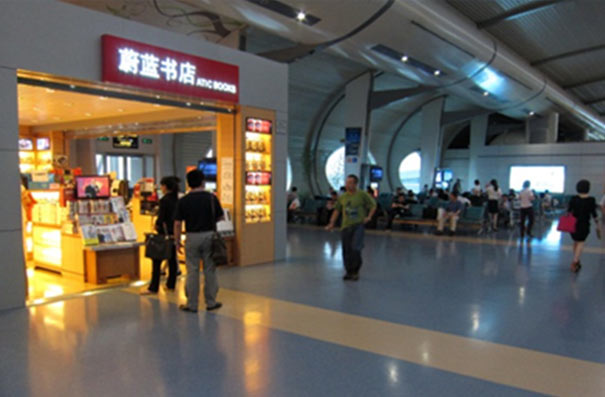One of the questions I’m regularly asked is “can you prove a direct link between passenger satisfaction and airport profitability?”
Unfortunately the answer is quite simply “no”. There are too many other variables which dominate the issue such as quality of shopping, attractiveness of shops and restaurants, local culture etc. More importantly it is rare that we see a big improvement in the passenger experience without a complete renovation of the terminal and the commercial environment so it’s very difficult to say that passenger satisfaction was the driving force in improving profitability. Equally it’s an impossible task comparing airports as the passenger experience is not always driven by commercial opportunities.
The answer is already visible in your airport
What interests me about this scepticism with regard to providing a great passenger experience is that while the airport management is not always convinced, a quick look at their shops, hotels and restaurants nearly always shows that retail managers have no doubt whatsoever that the path to profitability is making the customer feel relaxed and comfortable!
A simple, but fundamental example is that while airports often use harsh blue-white lighting, retailers recognise that people are more likely walk into a shop and to make a purchase with softer, yellower lighting.
It makes good business sense
At a more basic level, I would argue that providing a great passenger experience is actually good business sense, in fact in many cases, whether or not senior managers and shareholders recognise it, I believe airports don’t have much choice if they wish to continue to be commercially viable.
Aeronautical revenues are under pressure in nearly all airports. Even in those airports where passenger numbers are growing, airlines are pushing for reductions in airport charges. To my view, the airport has 4 main options:
Option 1 is very difficult as most airlines are cutting costs and services due to the competitiveness of their industry.
Option 2 is also increasingly frowned upon as governments become more sensitive to charges of monopolistic behaviour.
Option 3 is vulnerable to the charge of reducing safety and in any case, low cost strategies are difficult to maintain (if it were easy they’d have done it already) and are often unpopular, particularly with the travelling public.
Non-aeronautical revenues are the way forward
So option 4 – developing non-aeronautical revenue streams is actually the default option. Airports have a range of possibilities and are becoming ever more creative:
- Parking
- Restaurants
- Shopping
- Diversions
- Land management
- Hotels
The classic shops, restaurants and parking are increasingly supplemented with diversions (eg concerts, shows etc) to attract people. Airports are also looking at making better use of their land to create shopping malls, hotels, industrial zones and even store old aircraft.
There are two key challenges to non-aeronautical revenue – making sure sufficient passengers walk past (or through) and persuading passengers to spend. The first challenge directly depends on a successful aeronautical strategy – if there aren’t enough passengers, you can’t support retail. The second, persuading passengers to spend means creating an environment in which they wish to spend – a pleasant ambience and experience.
The problem for many airports is that there can be a tendency to focus on the retail areas and not the whole airport experience. This can be a mistake because while everything has to be perfect for a great passenger experience, just one issue at check-in / security / finding the gate can damage a passenger’s perception of the airport and make them unwilling to spend time in the retail area.
These airports also miss out on a range of other benefits from focusing on the passenger experience.
The secret benefits of focusing on the passenger
For some time I’ve wondered why some airports go to extreme lengths to provide a spectacular ambience and a unique experience. A couple of years ago, I started asking airports at the top of the ASQ rankings why they continued to focus on the passenger when some might say they are wasting money. The responses I’ve received have shown very deep thought about the nature of how an airport works and how to create efficiency and pride in its culture.
1. Passengers who have a great airport experience are more relaxed, spend more and want to come back
2. Airports increasingly compete with each other and also with alternative transport modes for passengers, therefore developing customer loyalty is important right now – at the very least having a good reputation is vital before the competition arrives.
3. A great passenger experience makes a good impression / enhances the reputation of your city/state/country. (The airport is the first and last thing a visitor sees). Therefore from a tourism, business and economic point of view it makes sense to invest in the airport.
4. A great passenger experience makes it very difficult for governments/regulators to argue that the airport is doing a bad job – the airport is clearly serving the community.
5. Focusing on the customer binds the organisation together. It gives all staff a clear goal and a clear understanding of the aims of the airport – what types of behaviour are acceptable and to be encouraged.
6. Staff who are committed to providing a great passenger experience tend to help their colleagues more making the airport more efficient and effective.
7. Staff, passengers and the local community who are proud of their airport look after it better, want to be associated with it and are less likely to litter or accept a shabby ambience.
8. A great passenger experience keeps media onside and helps marketing/publicity for the airport. Passengers often prejudge an airport based on its media profile. Given that media tend to publish negative issues more than positive ones, this can be a problem.
A strategy that fits all airports
A great passenger experience is not limited to airports with huge budgets. Our experience suggests that it’s much more closely linked to great management. Passengers understand that facilities at small regional airports are more limited than those of large hubs, but they also prize the advantages of smaller, more convenient airports. Passengers judge airports based on their experience in the facility – whether or not that is a good one may reflect infrastructure issues, but more often the culture of the airport management and employees.




Pingback: 5 Areas of Airport Operations Affected by Queuing
I am glad to go through this wonderful post on airport services. Really it will helps list of people to be aware about the airport services. Thanks for sharing a helpful article with us.